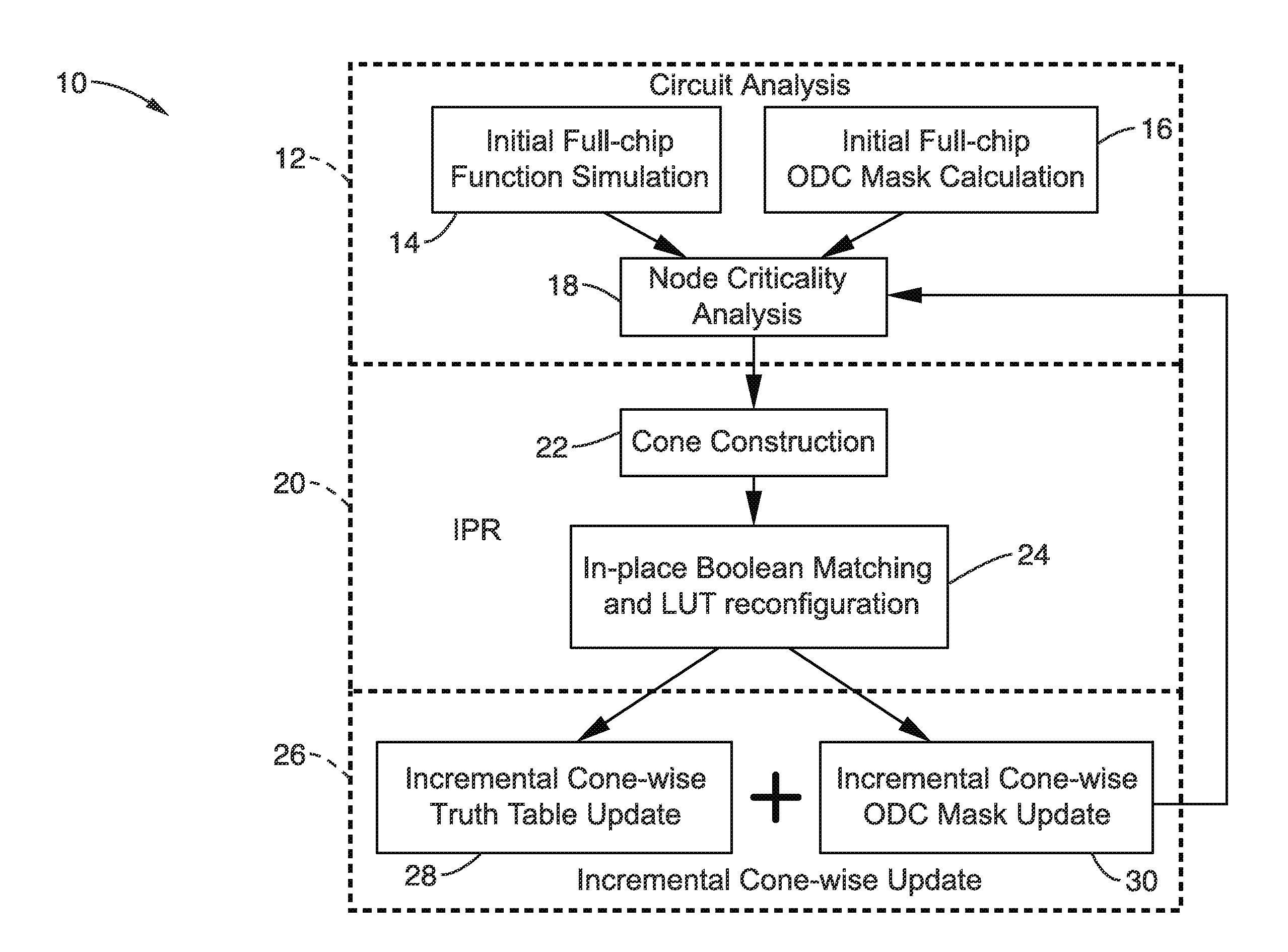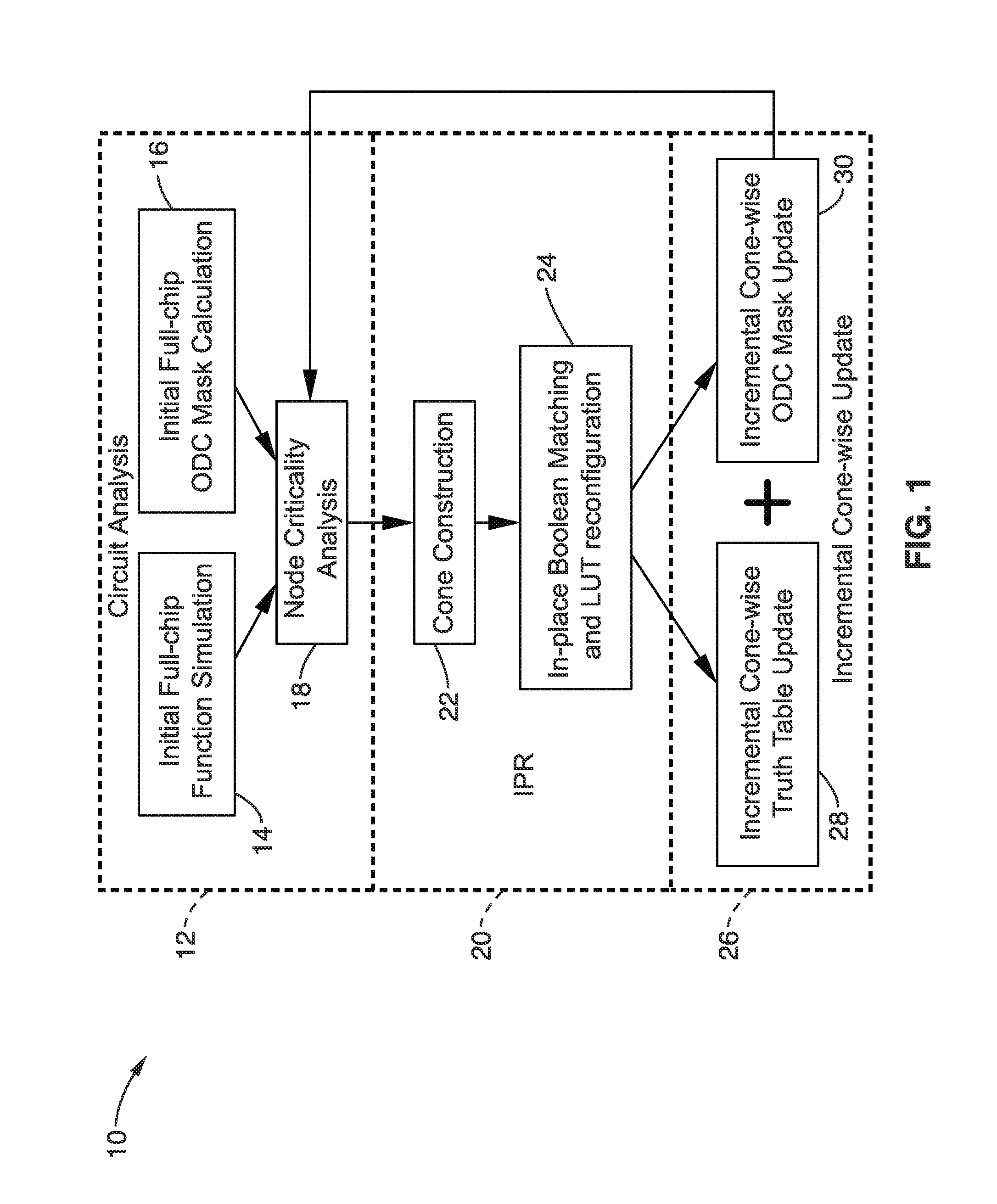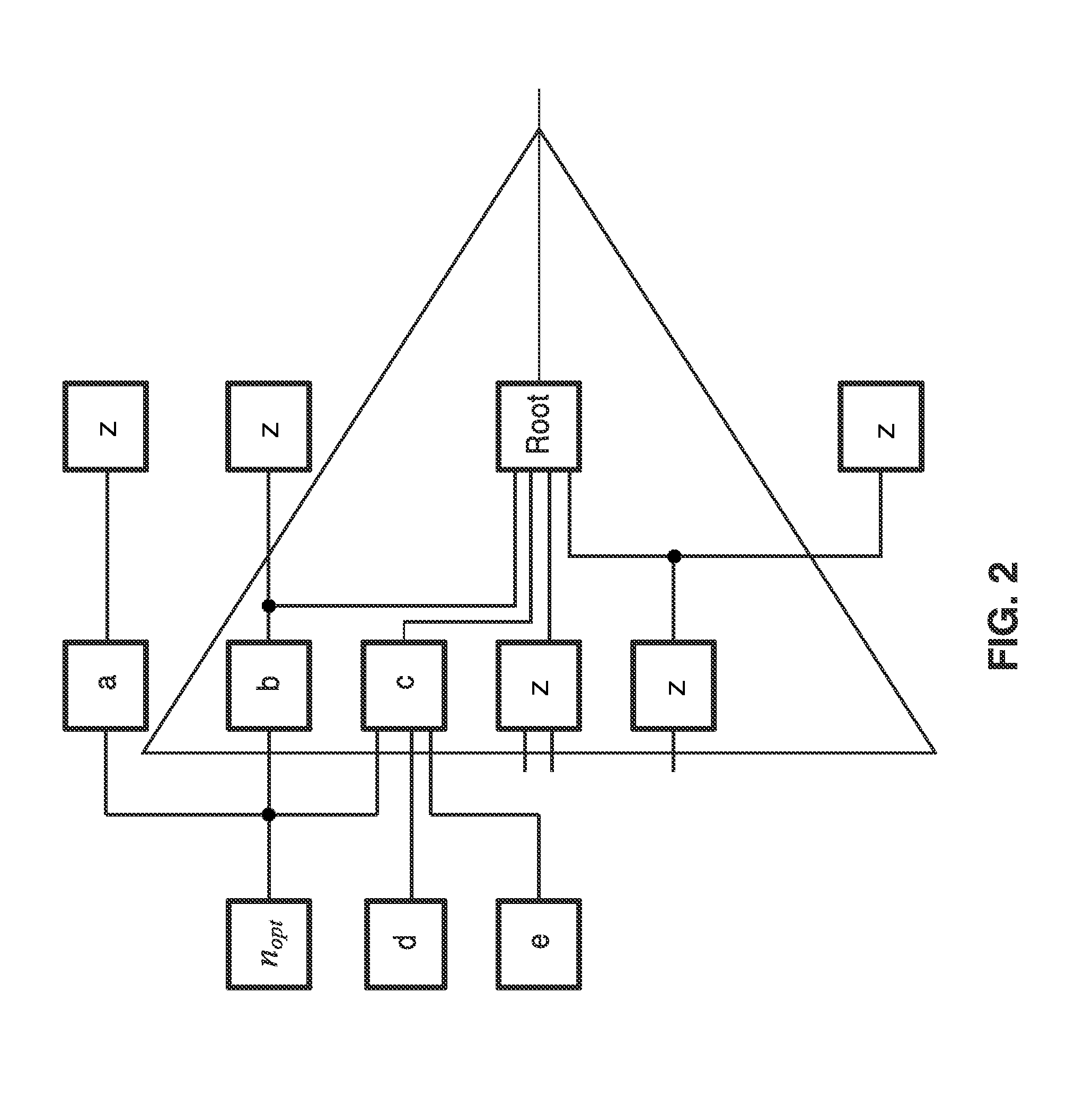In-place resynthesis and remapping techniques for soft error mitigation in FPGA
a technology of remapping and resynthesis, applied in the field of fpga resynthesis and remapping, can solve the problems of high overhead in relation to cost, area and/or power, and the cost of more vulnerability to a single event upset (seu), and achieve the effect of reducing the cost of fpga techniques, and reducing the cost of fpga
- Summary
- Abstract
- Description
- Claims
- Application Information
AI Technical Summary
Benefits of technology
Problems solved by technology
Method used
Image
Examples
embodiment 50
[0087]FIG. 4 illustrates an example architecture embodiment 50 of an FPGA-based emulator which provides efficient fault analysis. The emulator can be utilized during the circuit analysis (block 18 in FIG. 1) for efficient criticality computation and / or for full-chip evaluation. In addition, the emulator can be interfaced to a computer aided design (CAD) tool for interacting with the inventive in-place reconfiguration to provide information with increased accuracy, such as power estimation, fault injection and / or testing. Control logic 52 is coupled for controlling the activity in the circuit elements and performing fault injection 54. Considering fault tolerance, in particular, patterns are generated 56 for a circuit under test (CUT) 58 and golden circuit (reference) 60, while the global controller injects faults 54 to the CUT. The CUT output is checked against the golden circuit (reference circuit) 62, exemplified as an exclusive-OR circuit (XOR). The output bit-criticality control...
embodiment 90
[0093]FIG. 8A through FIG. 8B illustrate an embodiment 90 of a virtual-FPGA-based emulator for fault tolerance measurement. This emulator uses the block RAM to implement configuration bits (or logically replace the configuration bits), so that one can directly inject faults in the block RAM to emulate a fault in a “real” configuration bit. In most cases, the FPGA user is able to control the content of the block RAM, but is not able to flip the configuration bit at a specific location for a LUT or an interconnect.
[0094]In FIG. 8A, a series of configuration LUTs 92 are shown coupled to summing junctions 94a through 94n, which along with output from LUTs 92 feeds registers 96a through 96n, which each contain a flip-flop 98a through 98n with inputs D and E and outputs Q which are received by multiplexors (MUXs) with K inputs 100a through 100n. Output from the multiplexors is delayed through flip-flops 102a through 102n and received by multiplexors 104a through 104n, receiving signals or...
embodiment 1
[0179]2. The apparatus of embodiment 1, wherein said programming executable on said computer is configured to perform said in-place iterations as multiple iterations of an in-place resynthesis (IPR) process in which a group of look-up-tables (LUTs) are selected as a sub-network and identical configuration bits corresponding to complementary inputs of said group of LUTs are maximized, whereby faults seen at a pair of complementary inputs have a lower probability of propagation toward increasing overall reliability of the circuit.
[0180]3. The apparatus of embodiment 1: wherein said programming executable on said computer is configured to perform said in-place iterations as iterations of an in-place X-filling (IPF) process to a convergence in which states are determined for satisfiability don't cares (SDCs); and wherein said programming executable on said computer is configured to perform said in-place X-filling (IPF) process in response to performing single event upset (SEU) fault ana...
PUM
 Login to View More
Login to View More Abstract
Description
Claims
Application Information
 Login to View More
Login to View More - R&D
- Intellectual Property
- Life Sciences
- Materials
- Tech Scout
- Unparalleled Data Quality
- Higher Quality Content
- 60% Fewer Hallucinations
Browse by: Latest US Patents, China's latest patents, Technical Efficacy Thesaurus, Application Domain, Technology Topic, Popular Technical Reports.
© 2025 PatSnap. All rights reserved.Legal|Privacy policy|Modern Slavery Act Transparency Statement|Sitemap|About US| Contact US: help@patsnap.com



